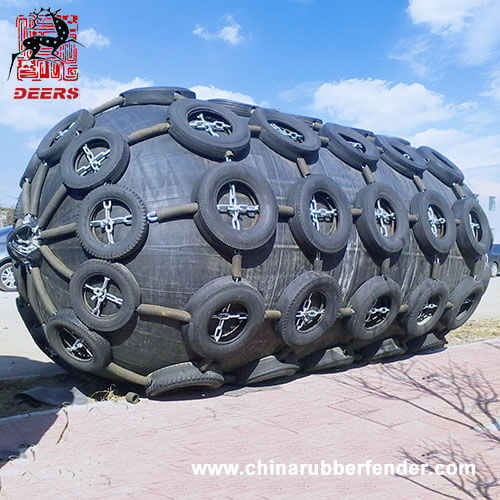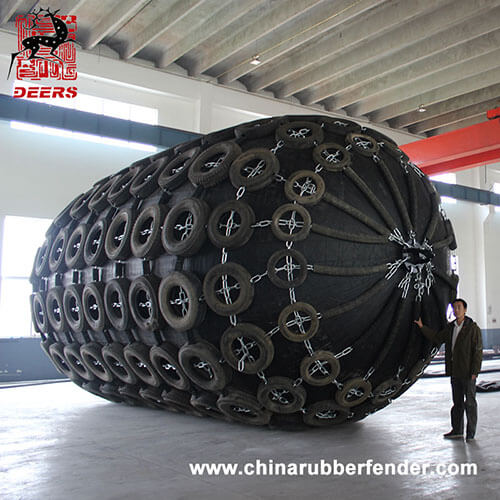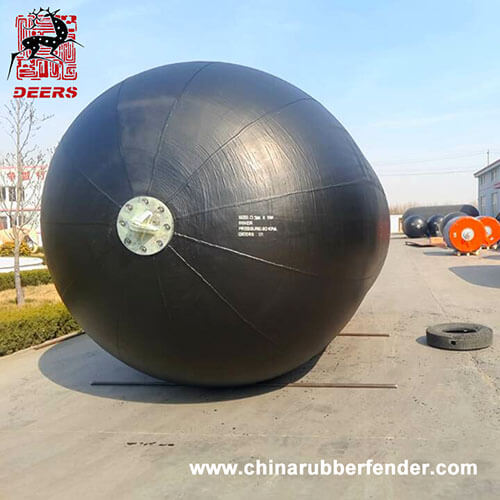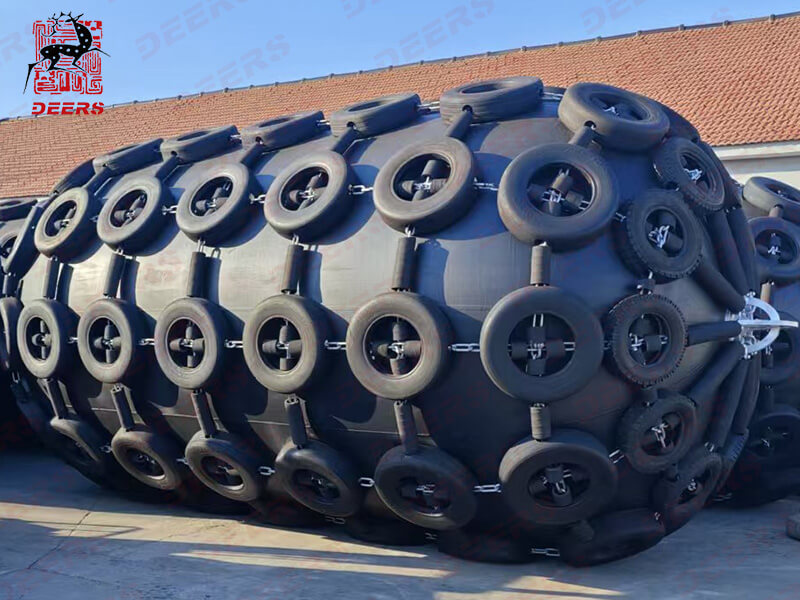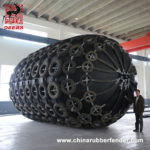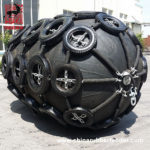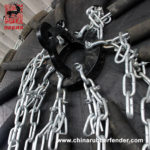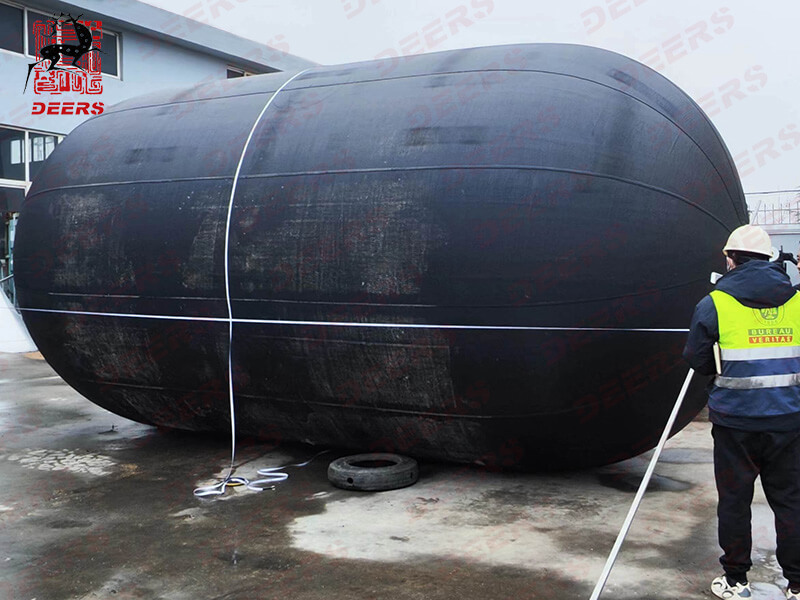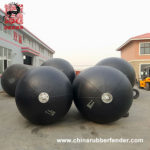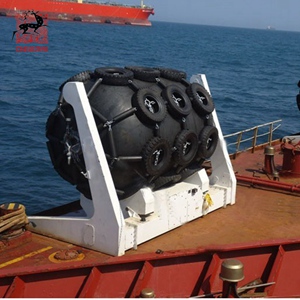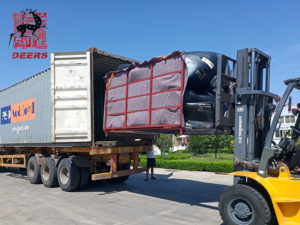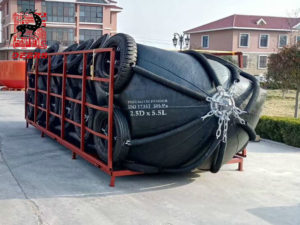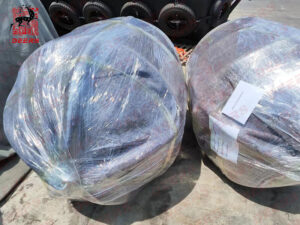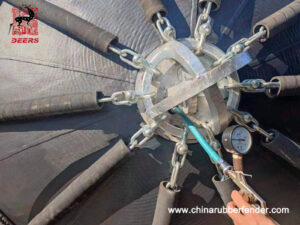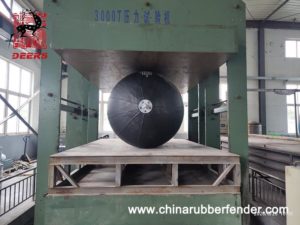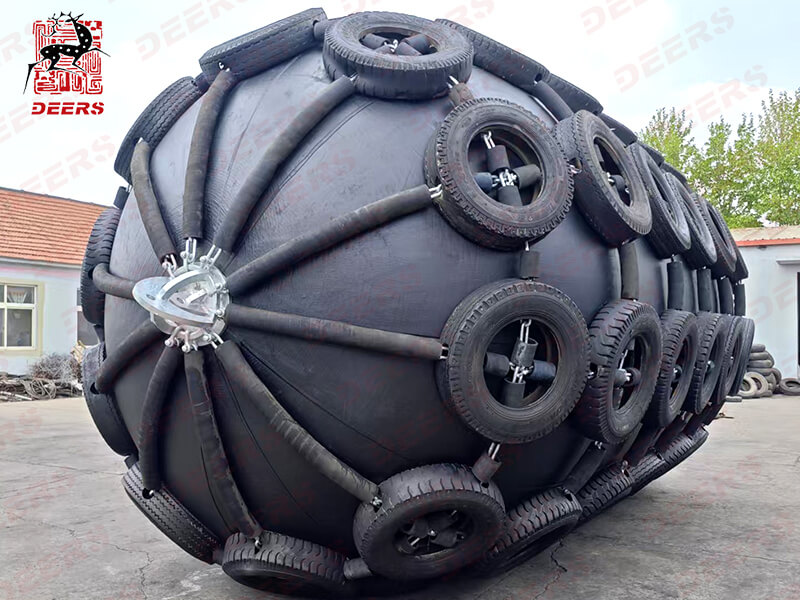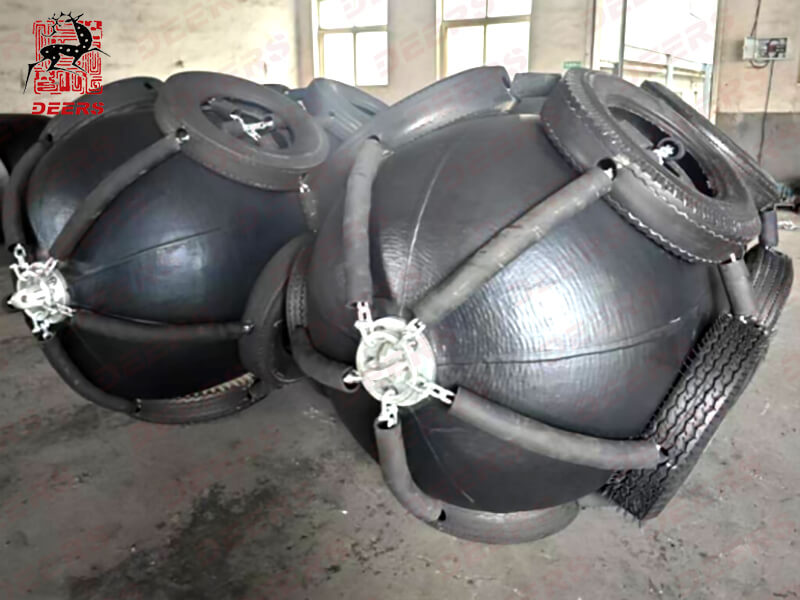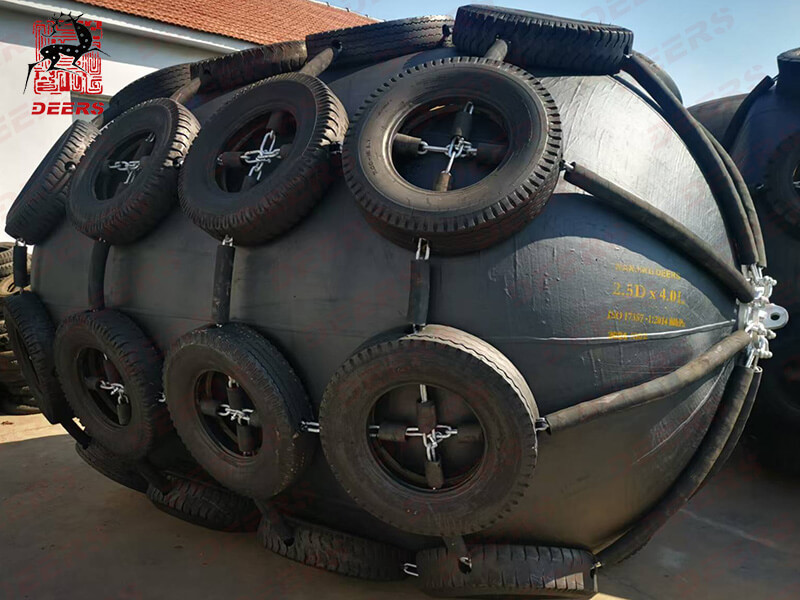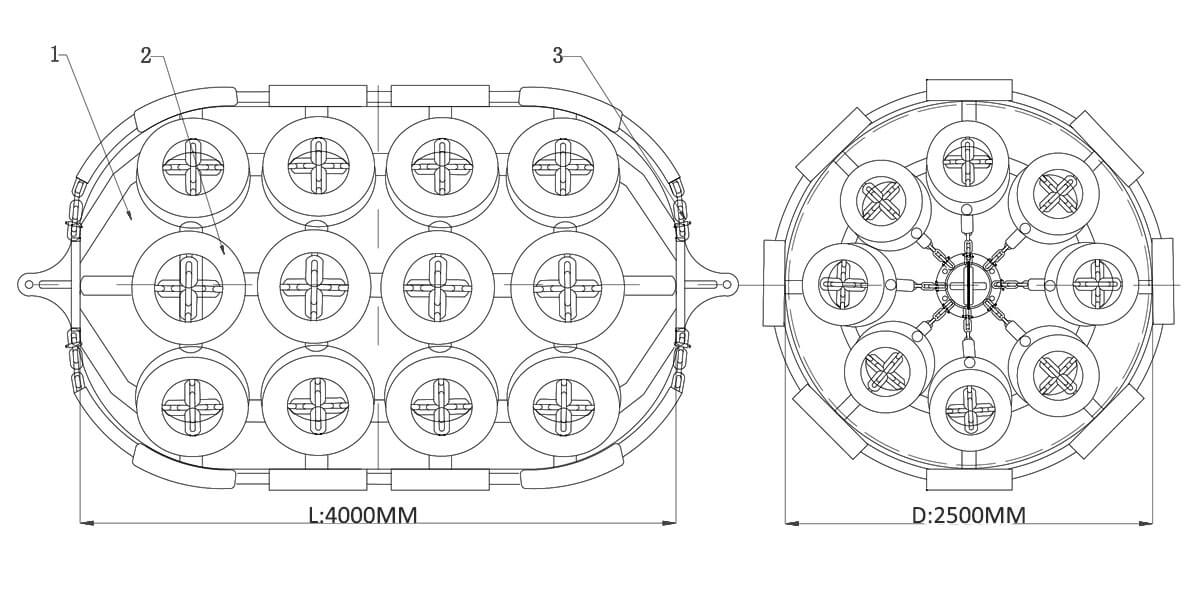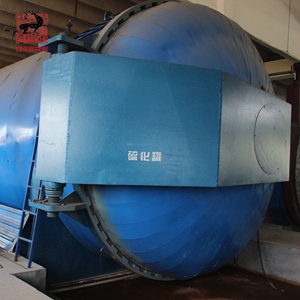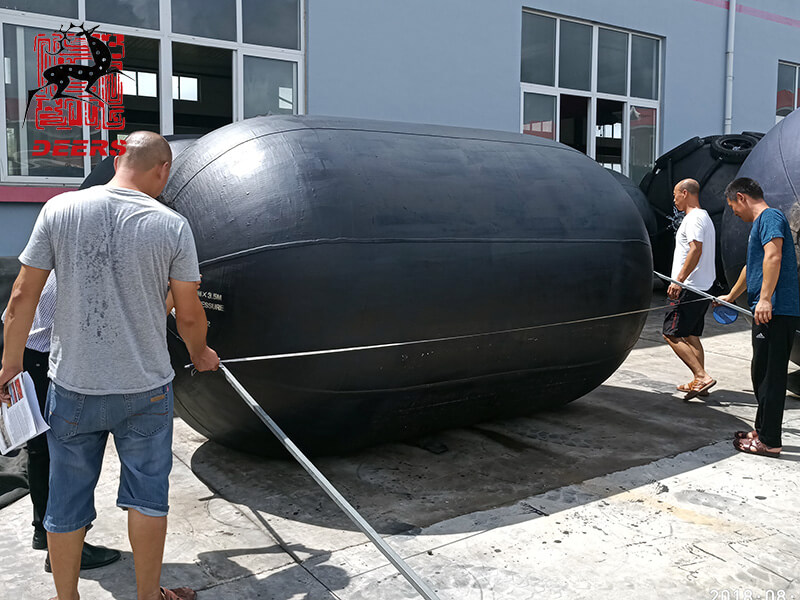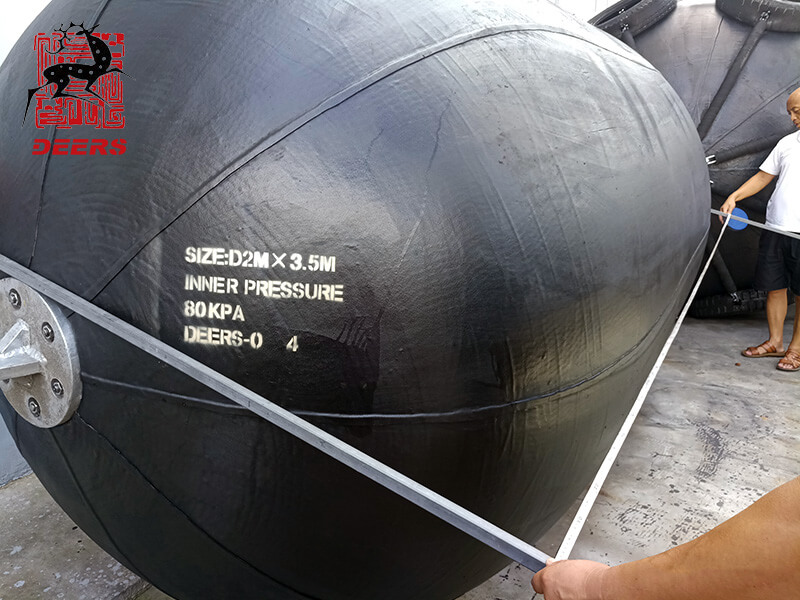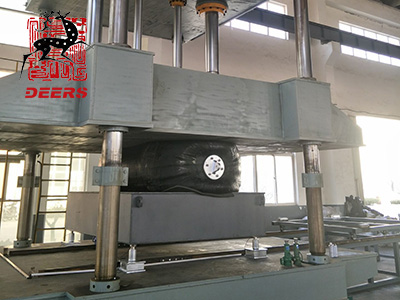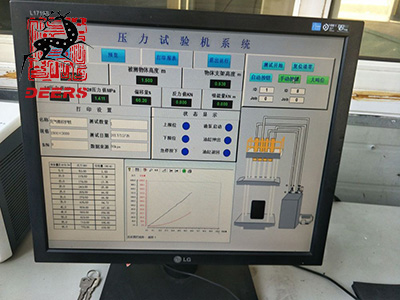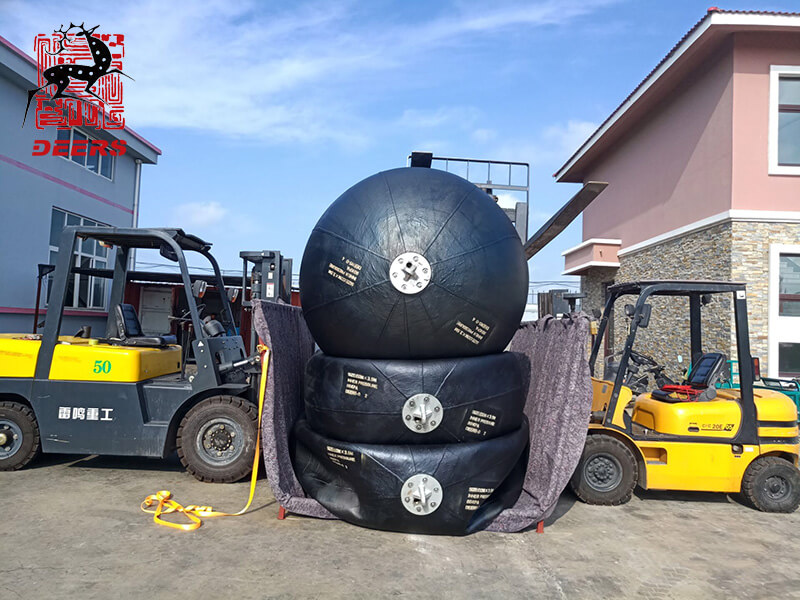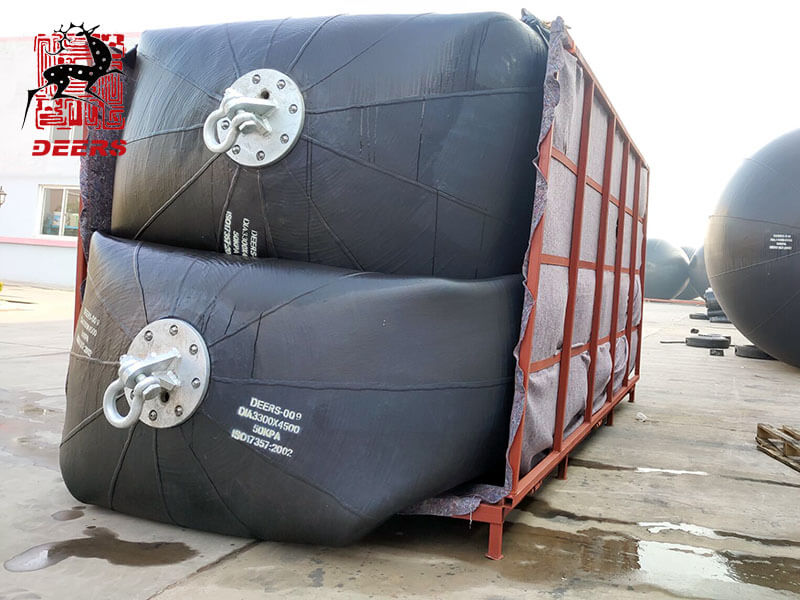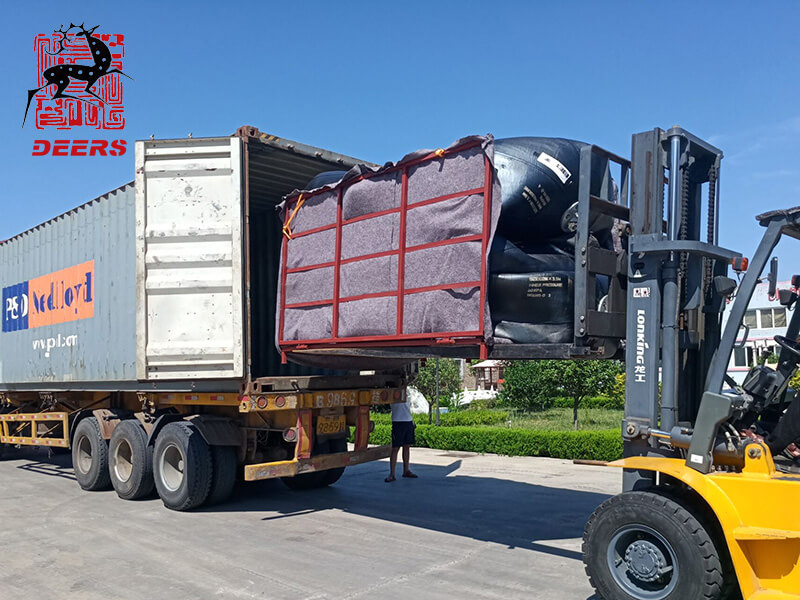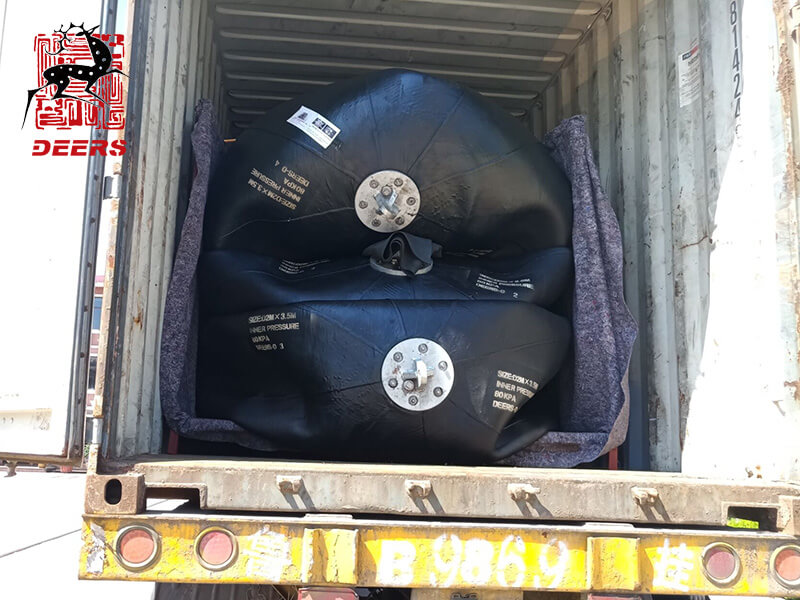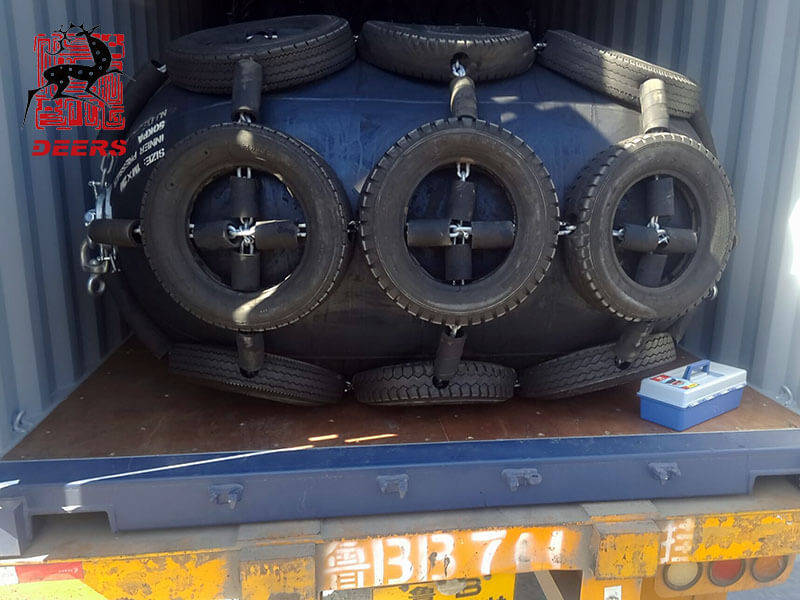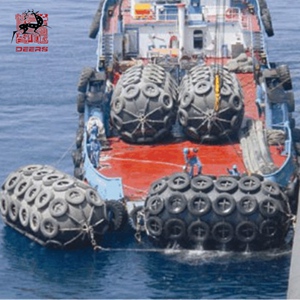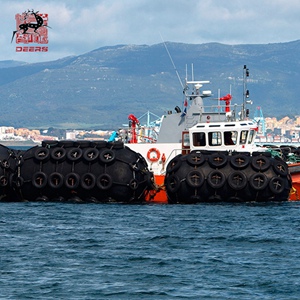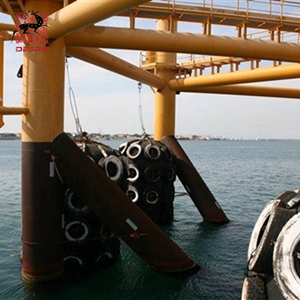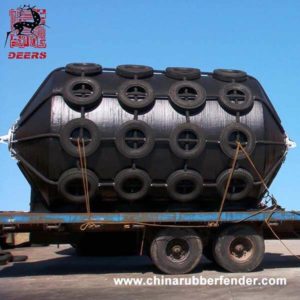| Normal Size | Performance(inner pressure:50Kpa,60%deflection) | Bodyweight (KG) |
Chain-net weight (KG) |
||
| Diameter (mm) |
Length (mm) |
Reaction force at GEA (KN) |
Guaranteed energy absorption (GEA)( KN.M) |
||
| 500 | 1000 | 64 | 6 | 23 | |
| 600 | 1000 | 74 | 8 | 28 | |
| 700 | 1500 | 137 | 17 | 58 | |
| 1000 | 1500 | 182 | 32 | 82 | 100 |
| 1000 | 2000 | 257 | 45 | 148 | 152 |
| 1200 | 2000 | 297 | 63 | 167 | 200 |
| 1350 | 2500 | 427 | 102 | 220 | 298 |
| 1500 | 3000 | 579 | 153 | 340 | 450 |
| 1700 | 3000 | 639 | 191 | 420 | 482 |
| 2000 | 3500 | 875 | 308 | 650 | 890 |
| 2000 | 4000 | 1008 | 368 | 740 | 1000 |
| 2500 | 4000 | 1381 | 663 | 1080 | 1180 |
| 2500 | 5500 | 2019 | 943 | 1180 | 1380 |
| 3000 | 5000 | 2422 | 1357 | 1980 | 2388 |
| 3000 | 6000 | 2906 | 1628 | 2400 | 2690 |
| 3300 | 4500 | 1884 | 1175 | 2380 | 2617 |
| 3300 | 6500 | 3015 | 1814 | 2980 | 3000 |
Performance of 50Kpa pneumatic fender :
| Normal Size | Performance(inner pressure:50Kpa,60%deflection) | Hull pressure(internal pressure) at GEA deflection (Kpa) |
||
| Diameter (mm) |
Length (mm) |
Reaction force at GEA(KN) | Guaranteed energy absorption (GEA)(KN.M) | |
| 500 | 1000 | 64 | 6 | 132 |
| 600 | 1000 | 74 | 8 | 126 |
| 700 | 1500 | 137 | 17 | 135 |
| 1000 | 1500 | 182 | 32 | 122 |
| 1000 | 2000 | 257 | 45 | 132 |
| 1200 | 2000 | 297 | 63 | 126 |
| 1350 | 2500 | 427 | 102 | 130 |
| 1500 | 3000 | 579 | 153 | 132 |
| 1700 | 3000 | 639 | 191 | 128 |
| 2000 | 3500 | 875 | 308 | 128 |
| 2500 | 4000 | 1381 | 663 | 137 |
| 2500 | 5500 | 2019 | 943 | 148 |
| 3300 | 4500 | 1884 | 1175 | 130 |
| 3300 | 6500 | 3015 | 1814 | 146 |
Performance of 80Kpa pneumatic fender :
| Normal Size | Performance(inner pressure:80Kpa,60%deflection) | Hull pressure(internal pressure) at GEA deflection (Kpa) |
||
| Diameter (mm) |
Length (mm) |
Reaction force at GEA(KN) | Guaranteed energy absorption (GEA)(KN.M) | |
| 500 | 1000 | 85 | 8 | 174 |
| 600 | 1000 | 98 | 11 | 166 |
| 700 | 1500 | 180 | 24 | 177 |
| 1000 | 1500 | 239 | 45 | 160 |
| 1000 | 2000 | 338 | 63 | 174 |
| 1200 | 2000 | 390 | 88 | 166 |
| 1350 | 2500 | 561 | 142 | 170 |
| 1500 | 3000 | 731 | 214 | 174 |
| 1700 | 3000 | 840 | 267 | 168 |
| 2000 | 3500 | 1150 | 430 | 168 |
| 2500 | 4000 | 1815 | 925 | 180 |
| 2500 | 5500 | 2653 | 1317 | 195 |
| 3300 | 4500 | 2476 | 1640 | 171 |
| 3300 | 6500 | 3961 | 2532 | 191 |
NOTE :
1ALL DIMENSIONS ARE IN MM UNLESS NOTED OTHERWISE.
2.REACTION FORCE:1381KN
3.ENERGY ABSORPTION:663KN-M
4.DEFLECTION:60%
5.PRODUCTION AND TEST COMPLY WITH 1S017357-1-2014.
6.MARKS:
D2500X4000MM
PRESSURE:—50KPA
NANJING DEERS
MADE IN CHINA
Production equipment
The size of the vulcanization tank determines the size of the pneumatic fender. The vulcanization tank in our factory allows us to meet the needs of most customers.
View testing videos about our rubber fenders:
Armored Floating Hose Pressure Testing
Product Testing
After the product is completed, in order to ensure the quality of the product, we will conduct self-test or third-party testing agency testing according to customer requirements, such as BV or SGS testing institutions, the testing content includes product size and weight and the most important compression testing. Our factory has its own large fender pressure testing machine, which performs the compression test of the product and generates a report. Before the test, the Pneumatic fender must remove the outer tire sheath or rope net and leave only the body.
- Body Test
- Fender Pressure Testing Machine
- Test Report
Packaging
The size and number of pneumatic fenders determine the way of packing. We have rich experience in packing. Normally larger fenders will use deflation to pack. We will give a set of inflatable fenders. Equipment, the customer can inflate and use the product normally after receiving the goods
View production videos about our marine fenders:
Application
Pneumatic rubber fender has been widely used in oil tankers, container ships, yachts, offshore platforms, large docks, military ports, large piers, etc.
The Pneumatic fender uses compressed air as the buffer medium to absorb the impact energy of the ship so that the ship can be more flexible and soft when docked, so as to achieve the effect of collision prevention, collision avoidance, and avoidance. Thus it is widely used in the transfer operation between ships and the berthing operation of ships.


